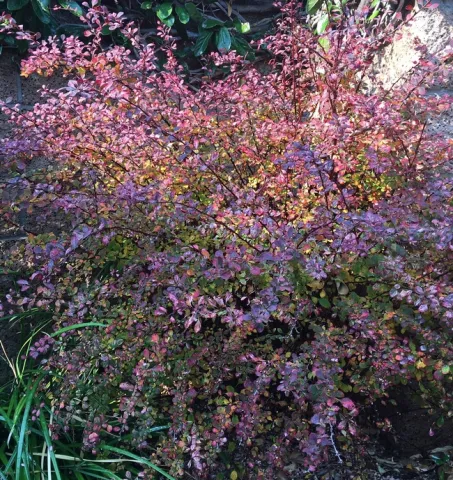
Japanese Barberry
By Leslie Stevens UCCE Master Gardener
Red Leaf Japanese Barberry
Berberis thunbergii 'Atropurpurea'
Planting areas: Sunset Zones A3, 2b – 24. Hardy to -20 degrees Fahrenheit
Size: 4-6 feet, tall and wide; pygmy varieties 1-1/2 to 2 feet, tall and wide
Bloom season: Tiny, bright yellow flowers in spring
Exposure: Full sun to partial shade
Pruning needs: Shear in late winter to maintain size and shape; prune out oldest stems as needed
Water needs: Drought tolerant once established
Snapshot: This deciduous shrub's popularity on the West Coast is well deserved. Japanese Barberry's compact size fits nicely into smaller landscapes, while its rich burgundy foliage provides attractive contrast to green shrubs and lawns. It's especially striking against chartreuse.
It's also not fussy when it comes to soil as long as it's not soggy. Japanese Barberry uses water sparingly; requires little care; and deer, slugs and snails avoid it.
Barberries make excellent hedges as well as effective barriers due to their dense, slender, spine-covered branches that deter animals and potential intruders.
In autumn and winter bright red berries adorn branches, while leaves take on yellow and orange tones before falling.
Barberries are native to Japan and eastern Asia and were imported to the United States in the late 1800's. They are widely planted throughout North America, but are considered invasive in many parts of the Eastern United States.

